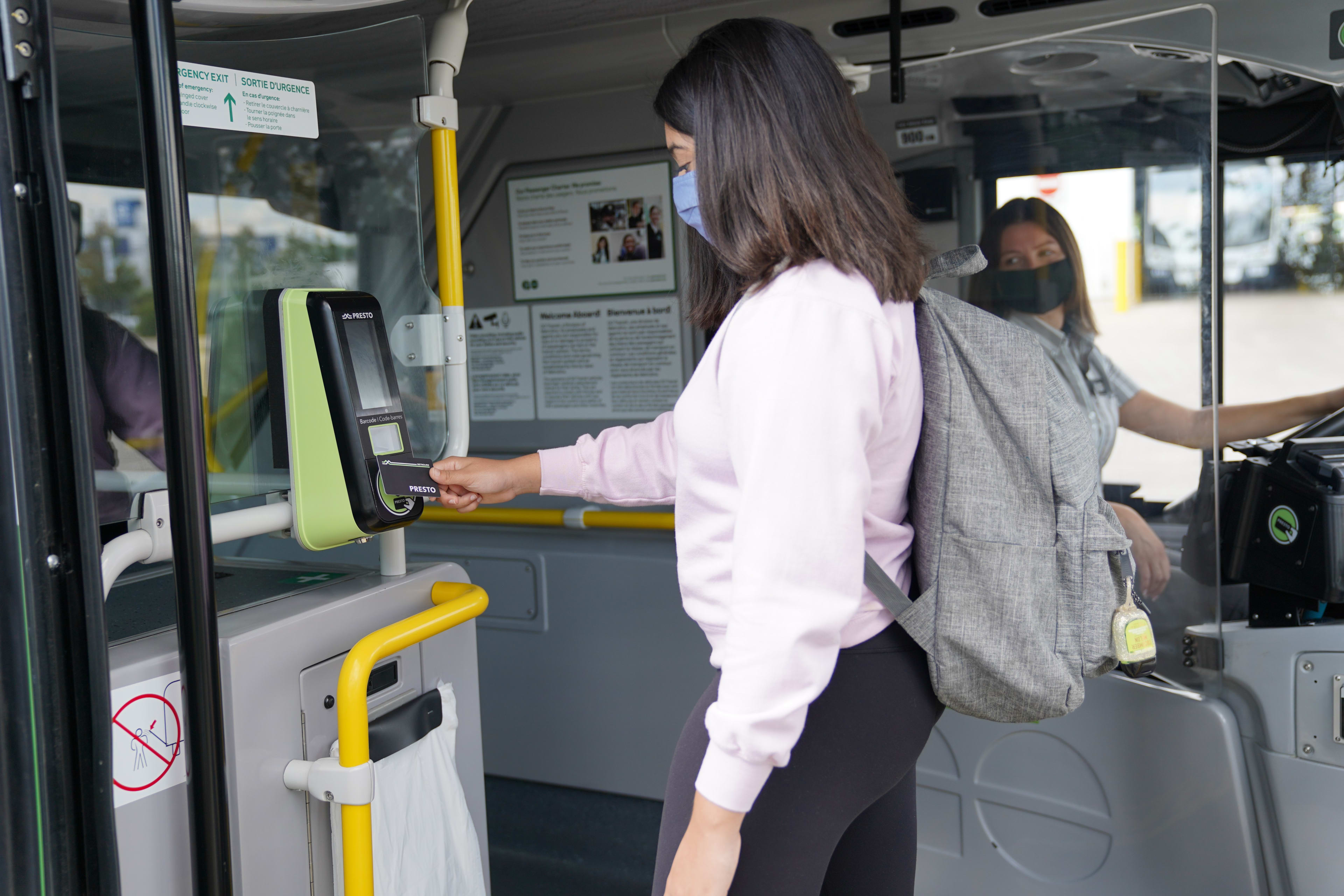Free local fares kick off with most local transit agencies
Metrolinx has worked with municipalities to make local connections free for GO customers.
Mar 14, 2022
Free local transit connections for GO customers are the latest result of Metrolinx’s work to offer seamless travel across municipal borders.
Starting today (Mar. 14), Metrolinx is making most local transit fares free for passengers connecting to and from GO Transit. The previous 75 per cent discount has been expanded to eliminate the full local transit fare.
If customers use a PRESTO card for both legs of their trip, the discount will be applied automatically. If the local agency does not use PRESTO, simply show your PRESTO card, a valid, single-ride paper ticket or day pass GO ticket as proof of GO fare payment.
Participating agencies include Durham Region Transit, Milton Transit, Grand River Transit, Guelph Transit, Oakville Transit, MiWay, Brampton Transit, Hamilton Street Railway, Burlington Transit, Bradford West Gwillimbury Transit, and York Region Transit, with continued participation from Barrie Transit.
Metrolinx has also lowered GO and UP fares for youth and post-secondary students who pay with their PRESTO card. GO and UP customers who are 13 to 19 years old – and those enrolled in full-time post-secondary education, regardless of age are eligible for a 40 per cent discount.
Transit is now more affordable with free local bus connections to GO. (Mike Winterburn photo)
As well, a pilot program will help people who need it most, with a 50 per cent fare rebate for riders enrolled in Peel Region’s Affordable Transit Program.
Details on the three changes – which all take effect today – can be found here.
These initiatives are part of a broader effort to better integrate transit across the GTHA.
Seamless connections in your community
Transit providers are working together to provide seamless service between GO and local connections.
“We are paying attention to the quality of our connections to local buses,” said Mathieu Goetzke, vice president of planning for Metrolinx.
“It’s a joint effort with local agencies because we all understand that it is in our joint interest to coordinate.”
For example, data on local bus routes is shared in an open-source format that helps Metrolinx to evaluate connections at local stations.
“That helps us to keep an eye on areas where customers are having the most trouble and where things are out of synch so that we can find solutions for our customers,” Goetzke said.
Free local transit connections to go will encourage more people to reach stations by bus or LRT instead of driving. (Metrolinx photo)
Of course, more frequent service, whether it’s from GO or a local agency can make things easier.
“When GO has service every 15 minutes, you really don’t need a schedule and when the Mississauga or Brampton buses arrive every 10 minutes, then the need to coordinate just dissolves, because there is such frequent service that you are automatically going to make your connection,” Goetzke said.
While the pandemic makes this an unusual time to be planning to increase service, the reality is that long-term population growth will create a need for more transit in the years to come.
New transit connections will make it easier to leave the car at home and connect to GO. Goetzke points to the new newly named Hurontario LRT as an example.
“This new LRT line is going to be a reliable, frequent service that can bring Mississauga residents across the city and give them better access to and from the GO rail network,” he said.
In addition to the high-frequency LRTs and bus routes, an idea from the earliest days of GO has remerged as a solution for bringing people into rail stations from less densely populated communities. Riders can book a Durham Region Transit On Demand shuttle with pick-up and drop-off locations that include bus stops, arterial roads and rural driveways.
More housing close to transit will encourage people to walk, not drive, to stations – that includes Transit Oriented Communities at some station sites and new projects going up near Pickering GO. (Mike Winterburn photo)
“This service provides a way of closing the gap in areas where more frequent bus service is not possible,” Goetzke explained.
Finding new ways to get people to GO stations will be critical as demand for fast and reliable train service grows. Fortunately, the percentage of GO passengers that reach the station by local transit was already growing before the pandemic.
Seven years ago, only eight per cent of GO passengers arrived on a local bus. Before the pandemic, it was up to 15 per cent. Goetzke sees a future where it will be as high as 32 per cent.
“Twenty years from now, we are going to have twice as many customers as what we had pre-pandemic,” Goetzke said.
“We will need for transit to bring in about as many people as those who drive and park.”
Metrolinx is the largest provider of free parking in North America with 73,000 spots (including 6,000 that are reserved) but a lack of space for expansion means that more people will have to arrive by transit.
This modern GO parking garage features a colour-coded wayfinding system, two fully accessible elevators, a brand-new car counting system and over 100 security cameras. (Brian Main photo)
by Mike Winterburn Metrolinx communications senior advisor
